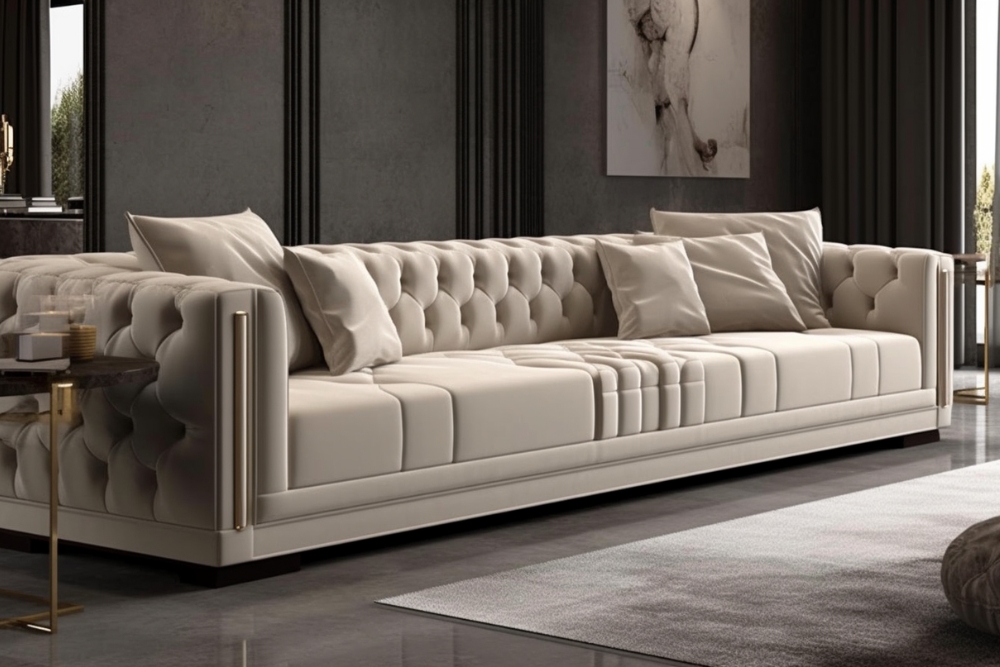Couches & Sofas: Choosing the Perfect Centerpiece for Your Living Room
Selecting the right couch or sofa is a crucial decision for any homeowner or renter. These pieces of furniture serve as the centerpiece of your living room, providing both comfort and style. With so many options available, it's essential to understand the factors that go into choosing the perfect sofa for your space, budget, and lifestyle.

How do I choose the right size sofa for my space?
Selecting the appropriate size sofa is crucial for both comfort and aesthetics. Start by measuring your room and considering the layout. Leave enough space for foot traffic and other furniture pieces. A general rule of thumb is to allow at least 18 inches of space between the sofa and other furniture or walls. Consider the scale of your room – a large sectional might overwhelm a small apartment, while a compact loveseat could look lost in a spacious living area.
What are the most popular sofa styles?
Sofa styles vary widely, catering to different tastes and interior design themes. Some popular styles include:
-
Chesterfield: Known for its tufted back and arms, often in leather.
-
Mid-century modern: Characterized by clean lines, tapered legs, and minimalist design.
-
Sectional: Modular sofas that can be arranged in various configurations.
-
Lawson: Featuring a boxy shape with loose back cushions for comfort.
-
Tuxedo: Recognized by its square arms that are the same height as the back.
Consider your home’s overall aesthetic and personal preferences when choosing a style that complements your space.
What upholstery materials are best for durability and easy maintenance?
The choice of upholstery material significantly affects your sofa’s durability and maintenance requirements. Some popular options include:
-
Leather: Durable and easy to clean, but can be expensive and sensitive to scratches.
-
Microfiber: Stain-resistant and budget-friendly, but may show wear over time.
-
Cotton: Natural and breathable, but prone to wrinkling and staining.
-
Polyester blends: Affordable and resistant to wear, but may lack the luxurious feel of natural fibers.
-
Performance fabrics: Engineered to resist stains, fading, and wear, ideal for high-traffic areas or homes with children and pets.
Consider your lifestyle, budget, and maintenance preferences when selecting the upholstery material for your sofa.
How can I finance a new sofa or couch?
Investing in quality furniture can be expensive, but there are several financing options available to make your purchase more manageable:
-
Store financing: Many furniture retailers offer in-house financing options, often with promotional interest-free periods.
-
Personal loans: Unsecured loans from banks or online lenders can be used for furniture purchases.
-
Credit cards: Some credit cards offer introductory 0% APR periods, which can be useful for financing furniture.
-
Buy now, pay later services: Platforms like Affirm, Klarna, or Afterpay allow you to split payments over time.
| Financing Option | Provider | Monthly Payment Estimate |
|---|---|---|
| Store financing | Ashley Furniture | $50-$200 |
| Personal loan | LightStream | $75-$300 |
| Credit card | Citi Double Cash | $100-$400 |
| Buy now, pay later | Affirm | $60-$250 |
Prices, rates, or cost estimates mentioned in this article are based on the latest available information but may change over time. Independent research is advised before making financial decisions.
When considering financing options, carefully review the terms, interest rates, and repayment periods. Be sure to choose a plan that fits comfortably within your budget to avoid financial strain.
How long should a quality sofa last?
A well-made sofa should last between 7 to 15 years, depending on its construction, materials, and how well it’s maintained. Factors that influence a sofa’s lifespan include:
-
Frame quality: Hardwood frames tend to be more durable than softwood or particleboard.
-
Cushion filling: High-density foam or down-blend cushions maintain their shape longer.
-
Usage: Daily use will cause more wear than occasional use.
-
Maintenance: Regular cleaning and proper care can extend your sofa’s life.
Investing in a high-quality sofa may cost more upfront but can save money in the long run by reducing the need for frequent replacements.
Choosing the right couch or sofa involves considering various factors, from size and style to material and financing options. By taking the time to research and evaluate your needs, you can find a piece that not only enhances your living space but also provides comfort and durability for years to come. Remember to consider your budget, lifestyle, and personal preferences to make the best choice for your home.






